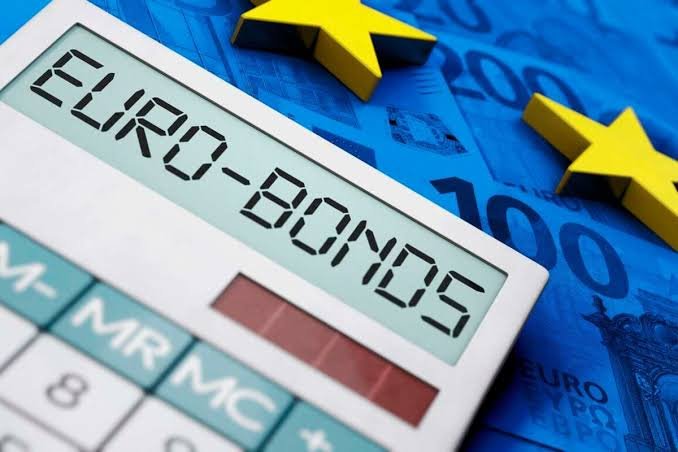Beyond the Buyback: Kenya’s Eurobond Success Masks a Deeper Debt Dilemma
Nairobi, Kenya – The sigh of relief from the National Treasury was almost audible across financial markets last month. Kenya had successfully navigated a critical juncture, executing a $1.5 billion Eurobond buyback and deftly avoiding a catastrophic default that many had feared. The move, hailed by the government as a major victory for its economic stewardship, provided immediate breathing room and bolstered the Kenyan shilling. However, the celebratory mood is proving to be short-lived. A sobering reality is now setting in among economists, policymakers, and citizens alike: the underlying structural issues of Kenya’s debt burden remain largely unaddressed, and the path ahead is fraught with even tougher fiscal choices. The successful Eurobond transaction, while a necessary tactical win, was merely the closing of one chapter in a much longer and more arduous economic story.
The operation itself was a complex feat of financial engineering. Facing a $2 billion Eurobond maturity in June 2024, Kenya raised fresh capital through a new $1.5 billion bond issuance. The proceeds were immediately used to repurchase a significant portion of the looming 2024 debt, effectively pushing its largest immediate payment obligation further into the future. This alleviated intense short-term pressure and demonstrated to international investors that Kenya could still access capital markets, a key signal of credibility. As reported by The Standard, the successful buyback was widely praised for staving off a default and providing a temporary cushion. Yet, the same analysis quickly pivots to the stark challenges that persist beyond this short-term fix.
The High Cost of Kicking the Can Down the Road
Financial reprieves are rarely free, and Kenya’s Eurobond maneuver is no exception. The new debt comes at a significantly higher cost than the bonds it replaced. Where the 2014 issuance carried an interest rate of around 6.875%, the new bond is priced at a steep premium, reflecting the heightened risk perception international investors have of Kenya’s economy. This higher coupon rate means that the government’s annual interest payments will swell, consuming an even larger share of the national budget that is already stretched thin. Essentially, the nation has traded an imminent lump-sum payment for a more expensive, long-term financial commitment.
This reality underscores a painful truth: Kenya’s debt distress has not been solved; it has been restructured and become more expensive to service. The National Treasury is now caught in a fiscal vice. On one side, revenues are under pressure due to subdued economic growth and challenges in expanding the tax base. On the other, mandatory expenditures—including a massive public wage bill and now, larger debt servicing costs—continue to climb. This leaves little room for the very capital expenditures on infrastructure, education, and healthcare that are essential for driving the long-term economic growth needed to outpace the debt.
“The buyback was a necessary firefighting operation, but it does not change the fundamental arithmetic of Kenya’s debt situation. We have swapped a cliff for a steep, uphill path. The higher interest costs on the new bond will place an additional burden on our budget for years to come, constraining our ability to fund development priorities,” a Nairobi-based economist told The Standard.
The human impact of this fiscal squeeze is already being felt. Austerity measures, including cuts to critical development projects and delays in disbursing funds to county governments, are impacting service delivery. For ordinary Kenyans, this translates to crowded classrooms, understaffed health clinics, and deteriorating roads. The government’s commitment to fiscal consolidation, as mandated by the International Monetary Fund (IMF) in its extended credit facility program, necessitates these painful cuts, but they also risk stifling the economic activity needed for recovery. The situation is a delicate balancing act between restoring fiscal health and maintaining social stability.
Navigating the Long Road to Sustainable Debt
So, what comes after the Eurobond high? The consensus among analysts is that Kenya must pursue a multi-pronged strategy focused on aggressive fiscal discipline and pro-growth policies. The first and most immediate task is to drastically narrow the budget deficit. This requires not only cutting non-essential spending but also significantly improving revenue collection. The Kenya Revenue Authority (KRA) faces immense pressure to widen the tax net and combat evasion, though this often proves politically difficult.
Secondly, there is a pressing need to shift the composition of public debt. Kenya’s portfolio has historically been weighted towards commercial debt—like Eurobonds and syndicated loans—which carry variable and often high-interest rates. The long-term strategy must involve pivoting towards more concessional financing from multilateral institutions like the World Bank and the International Monetary Fund, as well as bilateral partners. These loans typically offer longer grace periods and lower interest rates, making them far less burdensome to service. However, accessing such funding often requires adhering to strict reform programs.
“The Eurobond deal was a stay of execution, not a pardon. The government must now use this window of opportunity to implement the deep, structural reforms it has promised. This includes rationalizing wasteful expenditure, strengthening state-owned enterprises, and creating an environment that catalyzes private investment. Without growth, no amount of financial engineering will solve the debt problem,” a commentary in The Standard noted.
Ultimately, sustainable economic growth is the only permanent antidote to a debt crisis. Kenya’s path to solvency runs through its fields, its factories, and its tech hubs. Policies that boost agricultural productivity, support export-oriented manufacturing, and nurture the dynamic tech sector are crucial. Attracting foreign direct investment (FDI) in key sectors can also provide a vital infusion of capital and expertise. However, this requires a stable political environment, policy consistency, and continued improvements in the ease of doing business.
The successful navigation of the Eurobond maturity was a testament to the skill of Kenya’s financial officials and a dose of good fortune in global market conditions. But the nation now stands at a crossroads. One path leads to continued short-term fixes that accumulate into greater long-term vulnerability. The other, more difficult path, requires the political will to make unpopular decisions today for a more stable and prosperous tomorrow. The Eurobond chapter may be closed, but the book on Kenya’s debt story is far from finished, and its next chapters will be defined by the choices made in this fragile period of reprieve.


